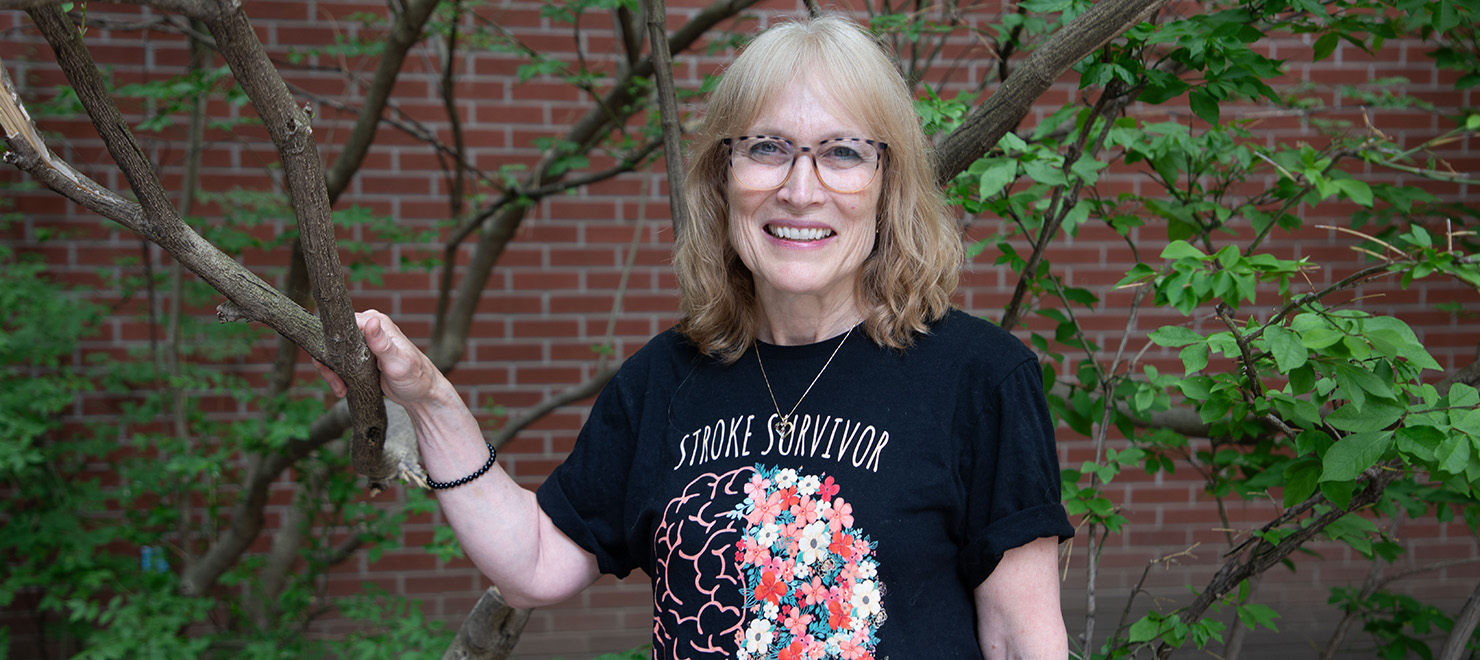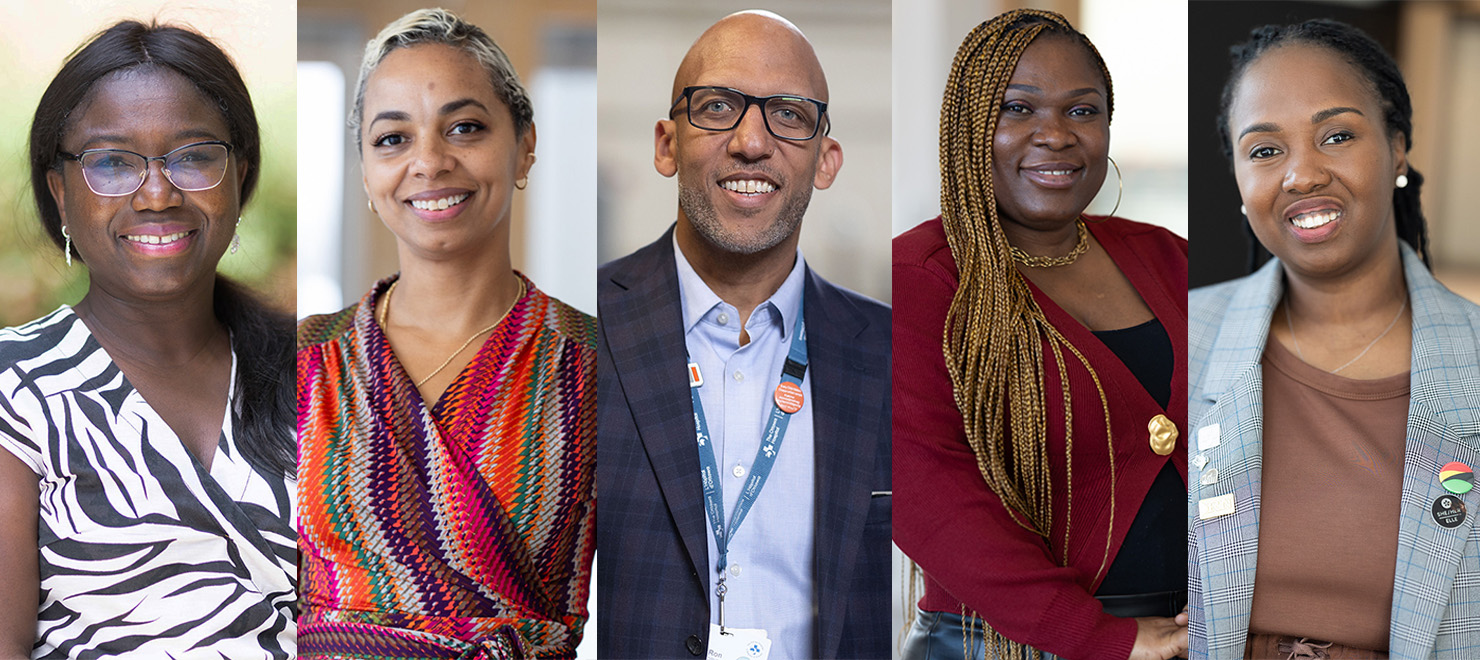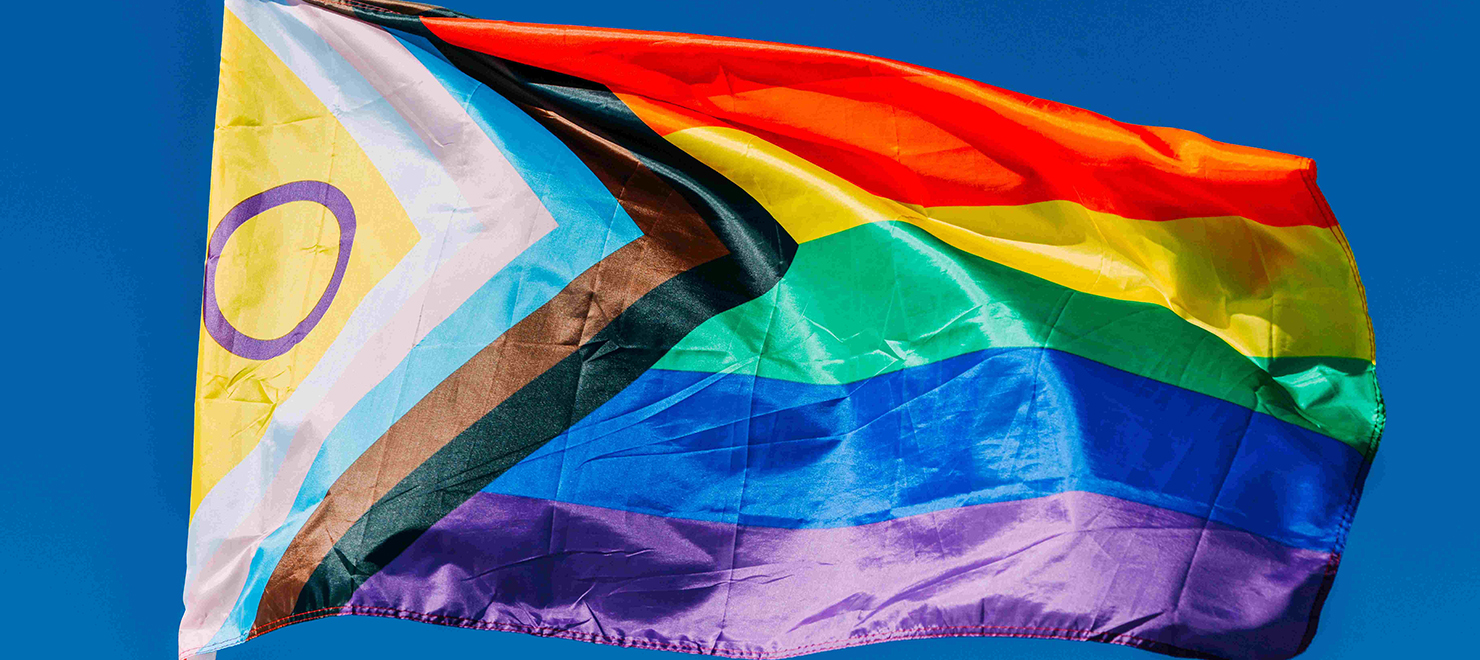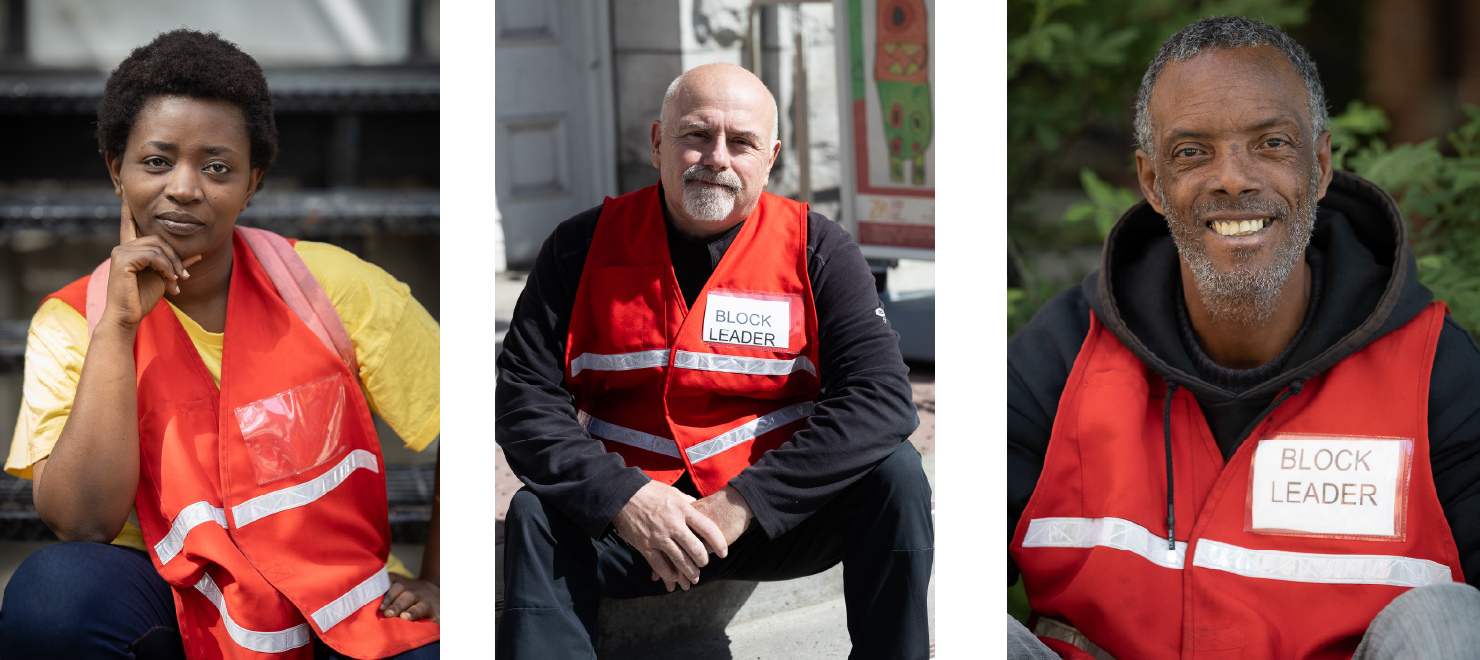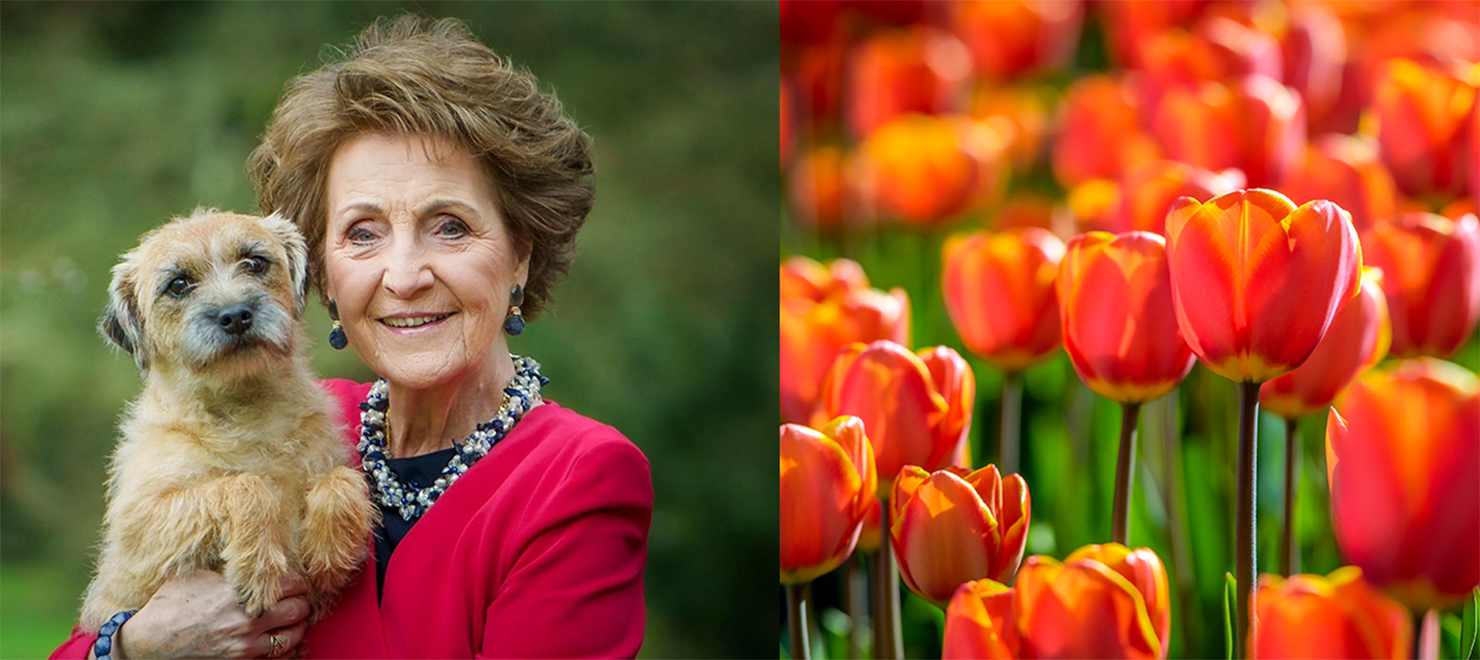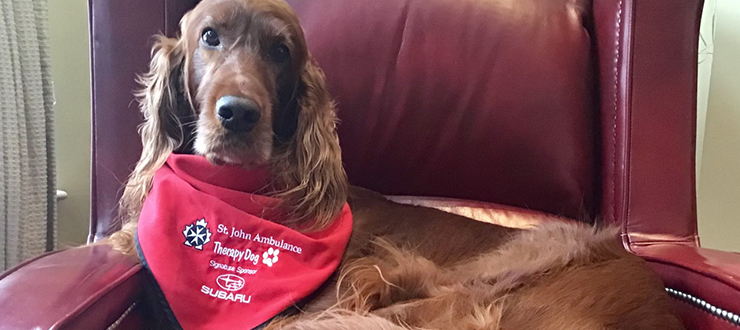
Part 1
“On a warm summer day, I was crossing the parking lot with Caileigh to go into the hospital. There was a family standing beside their car and Caileigh was urgently telling me that she wanted to go to see them — she’s not usually like that.
We walked over and found that one of the family members was weeping but was deeply appreciative of the opportunity to be with the dog at that moment. She asked, ‘does this dog know that I need her?’ I don’t know. But there was certainly a special kind of communication taking place.
The woman asked me to visit her husband who was in the hospital. She told me where I could find him and as it happened I was going to that unit that day, so I enquired about him when I got there. I was introduced to a large man whose dementia was very advanced. He was silent and emotionally unresponsive. He had not spoken since his admission three or four days earlier.
We approached the man and asked if he wanted to visit with the dog. He maintained his silence and showed no indication that he had any awareness of our presence. There was no communication and no connection. In sadness, I suggested that we might stop by another time. As we walked away, we heard a deep, booming voice proclaiming, “That’s a nice dog!”
Caileigh had reached this individual when human professionals had not been able to do it. It was an amazing moment and one that I will not soon forget. It illustrates the powerful nature of the human-animal bond at its finest.”
Part 2
“One day as Caileigh and I were visiting in the hospital, a member of the staff advised us that one particular patient was depressed and likely wouldn’t want a visit that day.
I knew this man slightly from previous visits, so I knocked on the door and asked if he wanted to chat with a dog. He said he wanted to be alone, and we respected that sentiment.
The room was dark and the curtains were drawn – it seemed like a very unpleasant place. As I walked away, another person came down the hall and said, ‘Oh, Caileigh, so nice to see you!”
Hearing that, the man enthusiastically leapt out of his bed and came rushing into the hallway shouting, “you didn’t tell me it was Caileigh!” He knelt down on the floor and hugged her tightly. It was a very touching moment.
I don’t know how she would have perceived that series of events, but somehow she knew that she was meant to be there – to bring joy and soothe souls. She has the best job in the world!”
Read how Christine and Caileigh are helping patients virtually!
Part 3
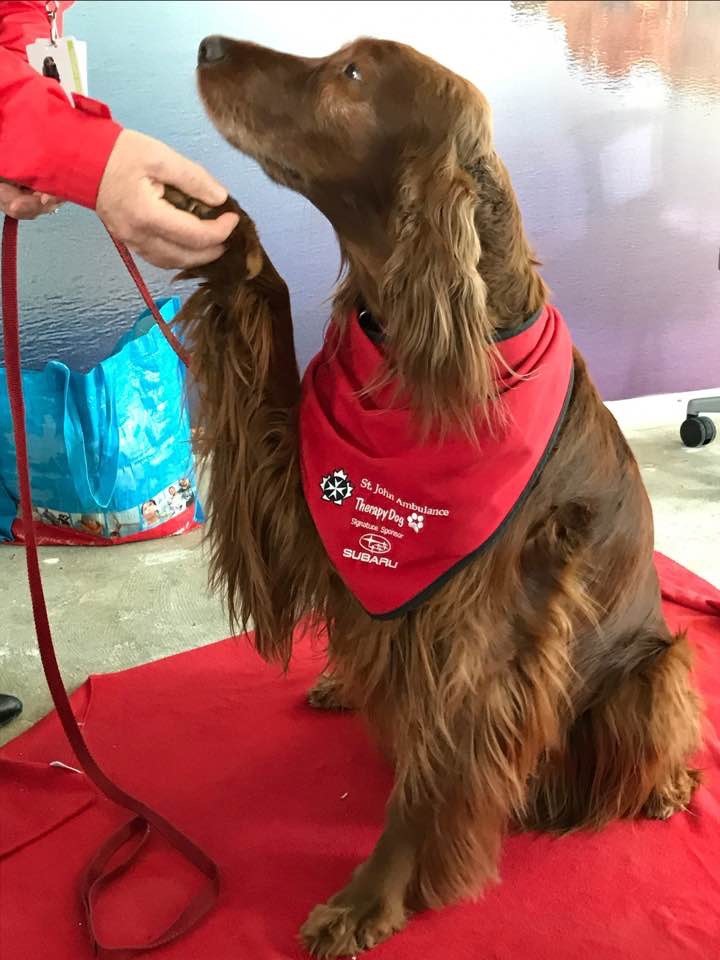
“We used to visit an elderly woman who would tell me every week about a dog that her father brought home to her in his pocket. She would remember it so vividly, recalling every detail about the sights and sounds and emotions of that long-ago time – reaching into her dad’s pocket and feeling that warm, fuzzy puppy. But she couldn’t remember that she had told me this story so many times.
She actually celebrated her 100th birthday during that period of time, so it occurred to me that she must have been talking about something that had happened 90 or 95 years earlier. She could remember it so clearly and perfectly, although she could not recall things that had happened much more recently. The connection to a dog allowed her to travel back in time to an event that had brought her happiness and excitement.
Connection is such a powerful thing. Sometimes I believe that we bring light into darkness and that perhaps Caileigh is able to be part of an incredibly positive experience for her human friends.”
Part 4
“As we were completing our visit to the hospital one day, one of the staff asked if we would spend a few minutes with a patient who had recently arrived. We peeked behind the curtain and approached the man who was eager to talk about dogs he had known and loved.
He stroked Caileigh’s head as she sat, appearing to listen to his stories. As the conversation progressed, we talked a little about what had brought the man to the hospital that day. He told me that what he called his “MAiD Day” was approaching.
He had been able to access the provisions for assisted dying that were available to him and had arranged for the event to happen at his home in a few days’ time. There would be food and drink and the opportunity for friends and family to come and say goodbye. When they left, his life would be ended.
When I could see that the man was becoming tired, I suggested that we leave and let him rest. He took Caileigh’s head in his hands and said, “I am so glad that I got to spend some time with you today.”
In the midst of his suffering, when his days were literally numbered, this man found joy in the presence of a dog. Words cannot express what a great privilege it is to be a part of this.”
Read more about MAiD at The Ottawa Hospital.
Bonus!
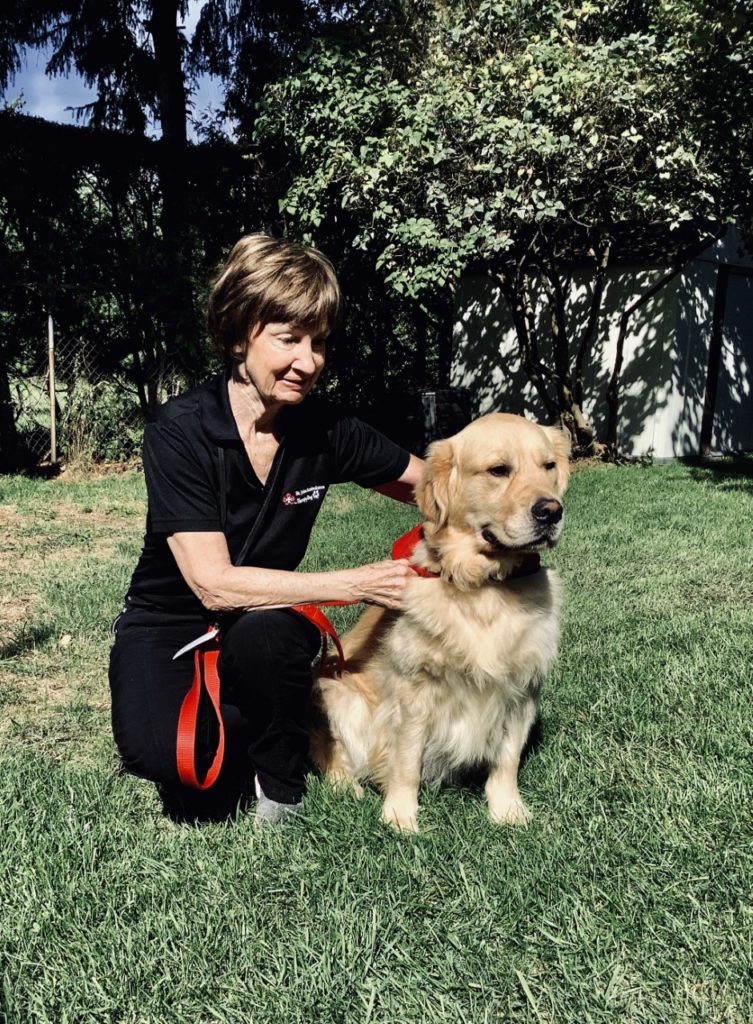
This bonus story comes from hospital volunteer Joanne Rodgers and her therapy dog, Happy.
Joanne writes:
“I particularly remember one day, on my usual visit to the ER with Happy. They had a gentleman there who was extremely distraught. He seemed very depressed and anxious, and despite their best efforts nothing the staff did calmed him.
So I brought Happy in and sat down near this gentleman, who immediately engaged with Happy. He talked to me about his troubles. He really enjoyed petting Happy, and as he did, his feelings spilled out. We had a great conversation while he and Happy enjoyed each other.
Eventually he was smiling and calm, and I felt it was a good time to leave. He thanked me for my visit and said it had done him a world of good. It had done me a world of good, too. Happy is a special boy. He worked his magic that day.”
Thank you to everyone for reading this special series of how therapy dogs make a difference in people’s lives!

Support patient care and research at
The Ottawa Hospital
You might also like…
From survivor to supporter: Peer volunteers bring hope to patients recovering from stroke
Drawing on their own lived experiences as stroke survivors or caregivers, volunteers with March of Dimes Canada’s After Stroke Hospital Peer Connections program offer emotional support to those just beginning their recovery journey. Discover the difference they’re making and learn about how you can request support for a loved one — or become a beacon of hope yourself.
February is Black History Month
Five members of The Ottawa Hospital’s Black community reflect on what this month means to them, their heritage and the importance of building a truly equitable health care system.
The place to be: The Ottawa Hospital recognized as one of Canada’s most admired corporate cultures
The Ottawa Hospital (TOH) has been named one of Canada’s most admired corporate cultures. Guided by compassion and commitment to patient care, TOH has developed a workplace culture that inspires confidence and trust in our employees, patients and family members.
2SLGBTQIA+ care at The Ottawa Hospital: A helpful guide
The Ottawa Hospital offers an array of services and resources to help meet the specific care needs of the 2SLGBTQIA+ community — including a provincial-first gender-affirming surgery clinic, a 24/7 care program for survivors of sexual assault and intimate partner violence, and a specialty clinic for medically complex patients seeking help on their transition journeys.
“It’s about giving them hope and purpose”: Ottawa Inner City Health’s Block Leaders program marks one year serving the community
Seven days a week, Block Leaders head out into the ByWard Market to help fellow members of their community who are unhoused or use drugs. They provide support to people in distress, respond to overdoses and even clean their neighbourhood — all with the goal of creating a safer and healthier community for everyone.
Watch: Princess Margriet of the Netherlands sent us this lovely video message for the Civic’s 100th anniversary
If you’ve ever wondered why tulips are so important to our city, the answer involves a world war, a royal family and The Ottawa Hospital’s Civic Campus. In this special video message, Her Royal Highness Princess Margriet of the Netherlands shares why the tulip is a special symbol of the endearing friendship between her country and Canada.


 To reset, hold the Ctrl key, then press 0.
To reset, hold the Ctrl key, then press 0.
